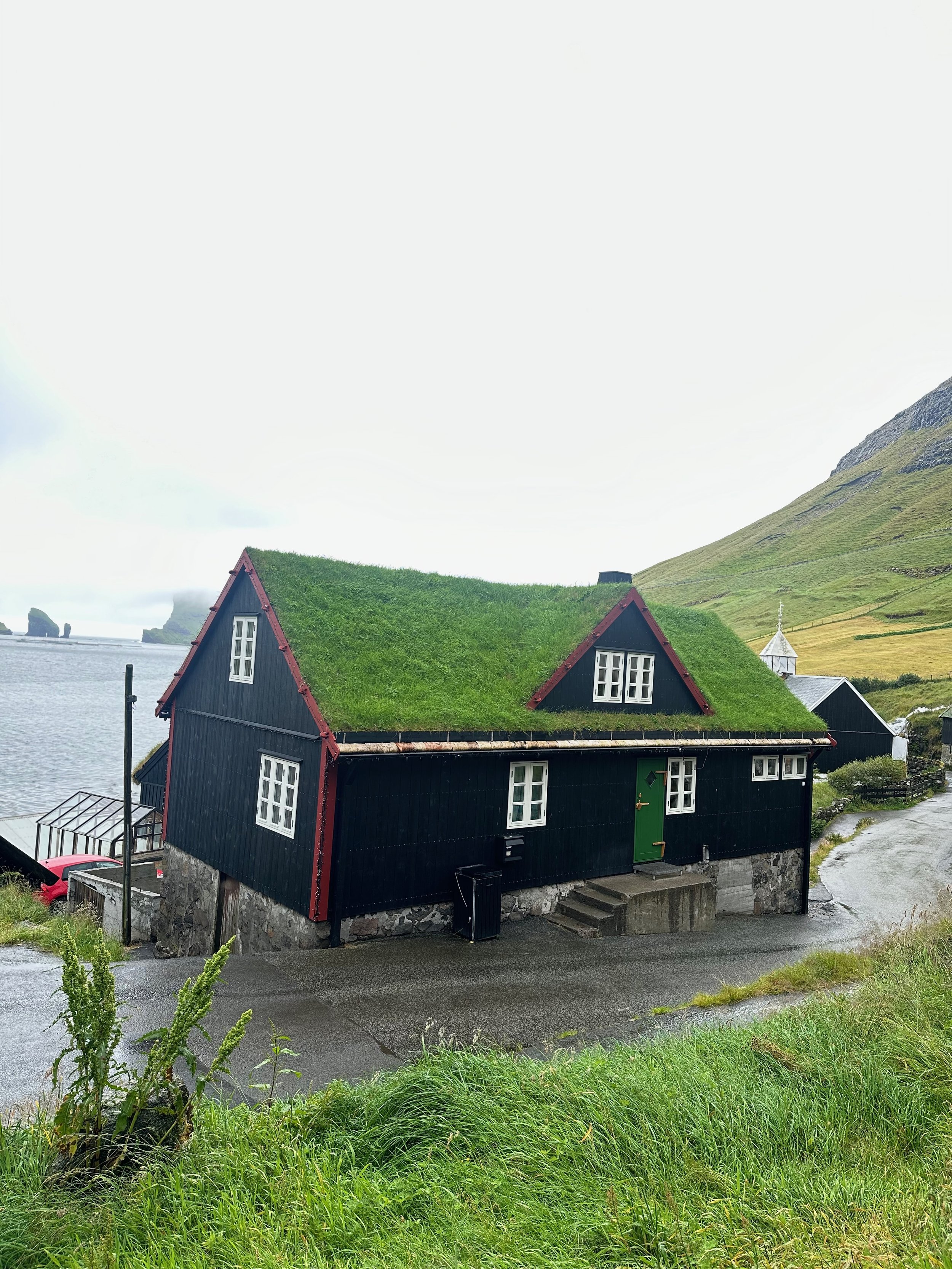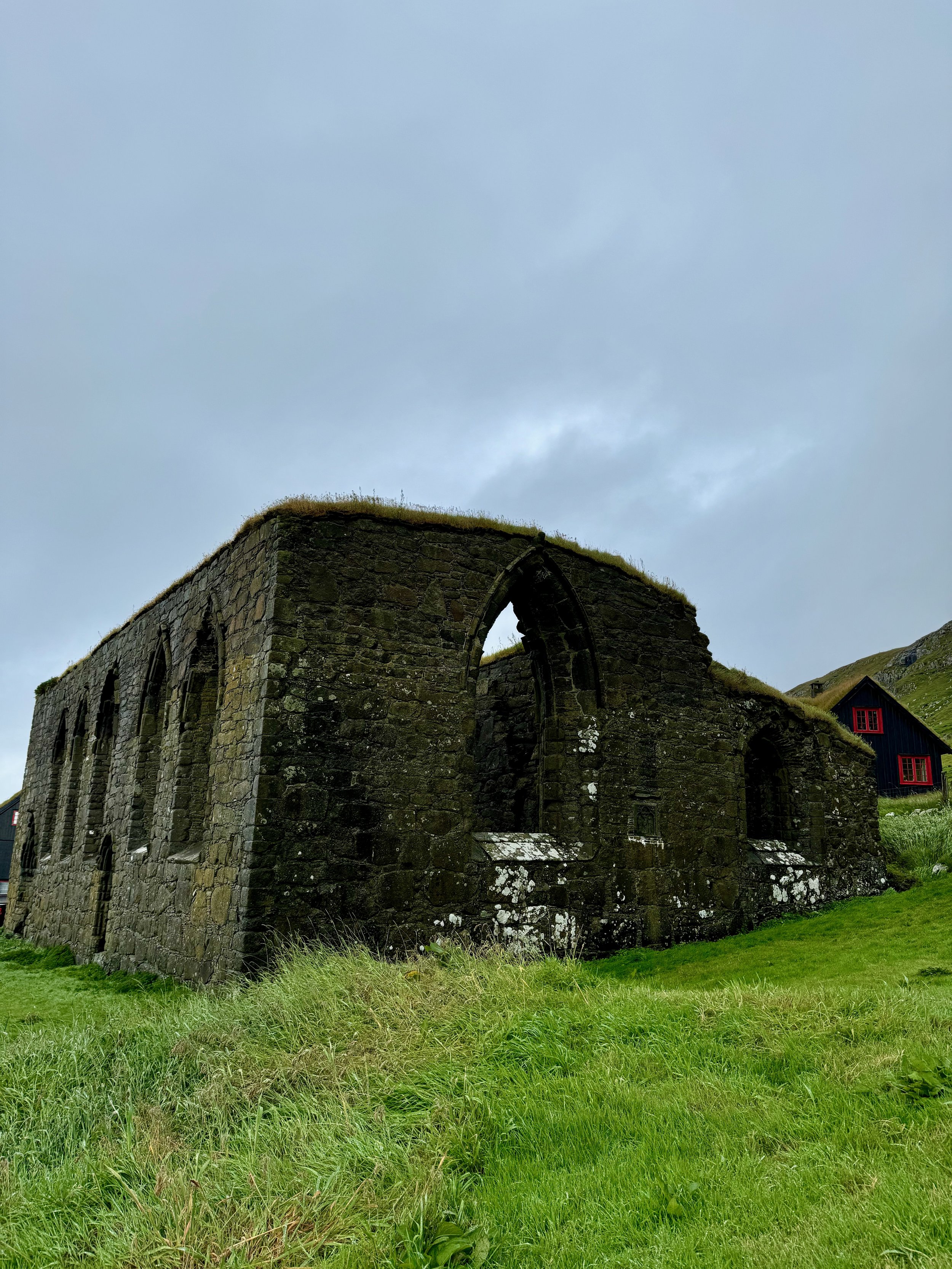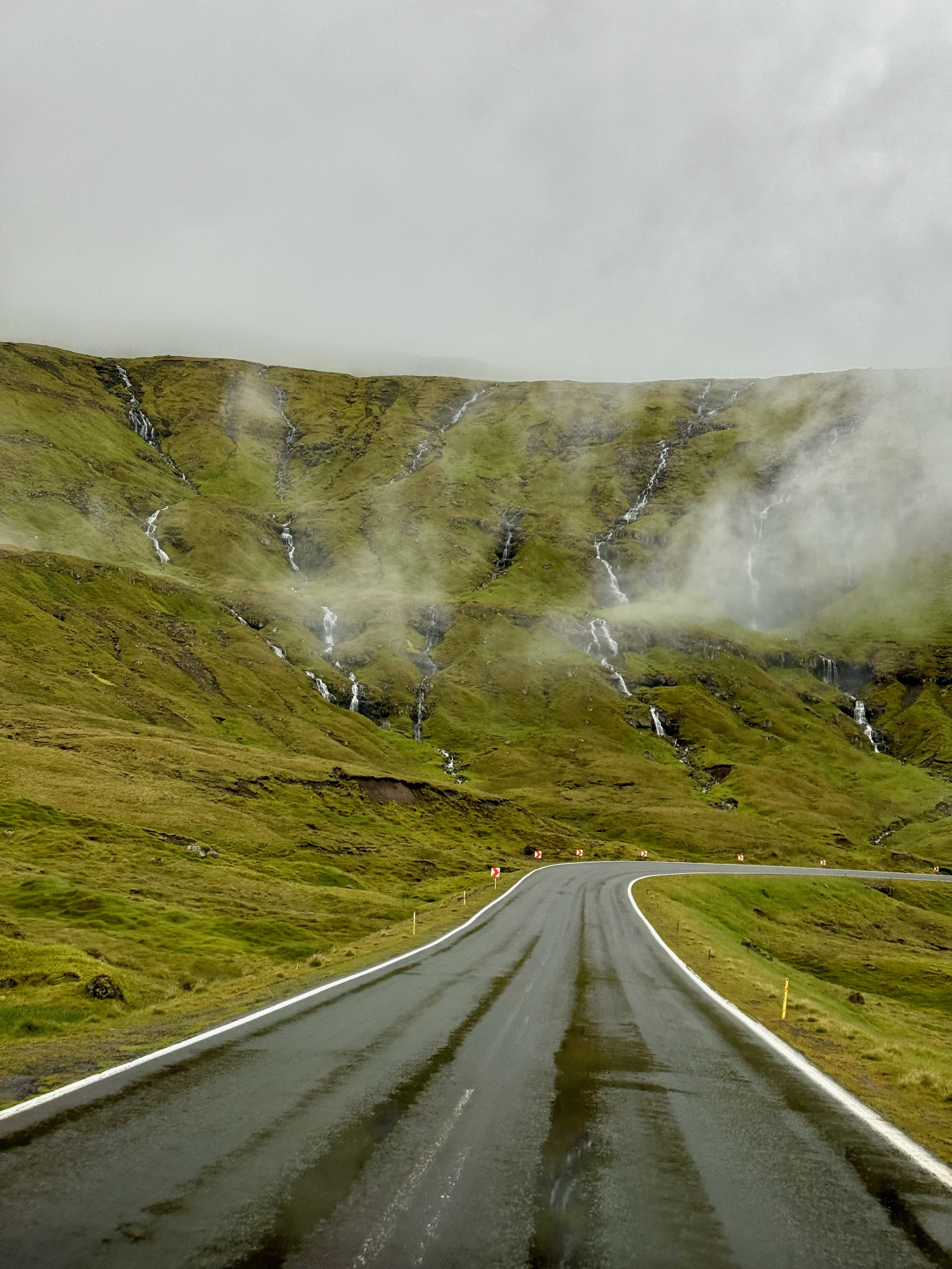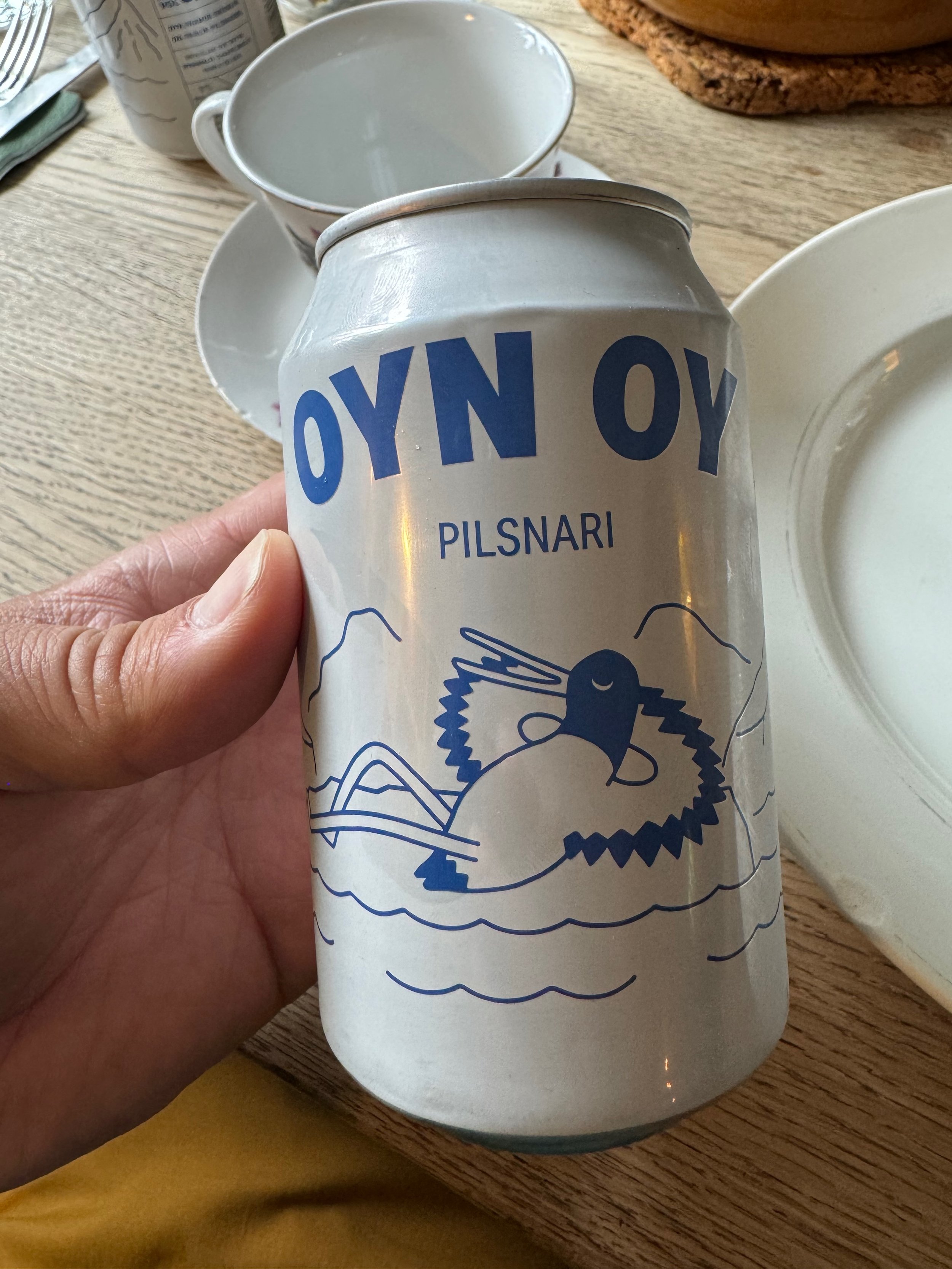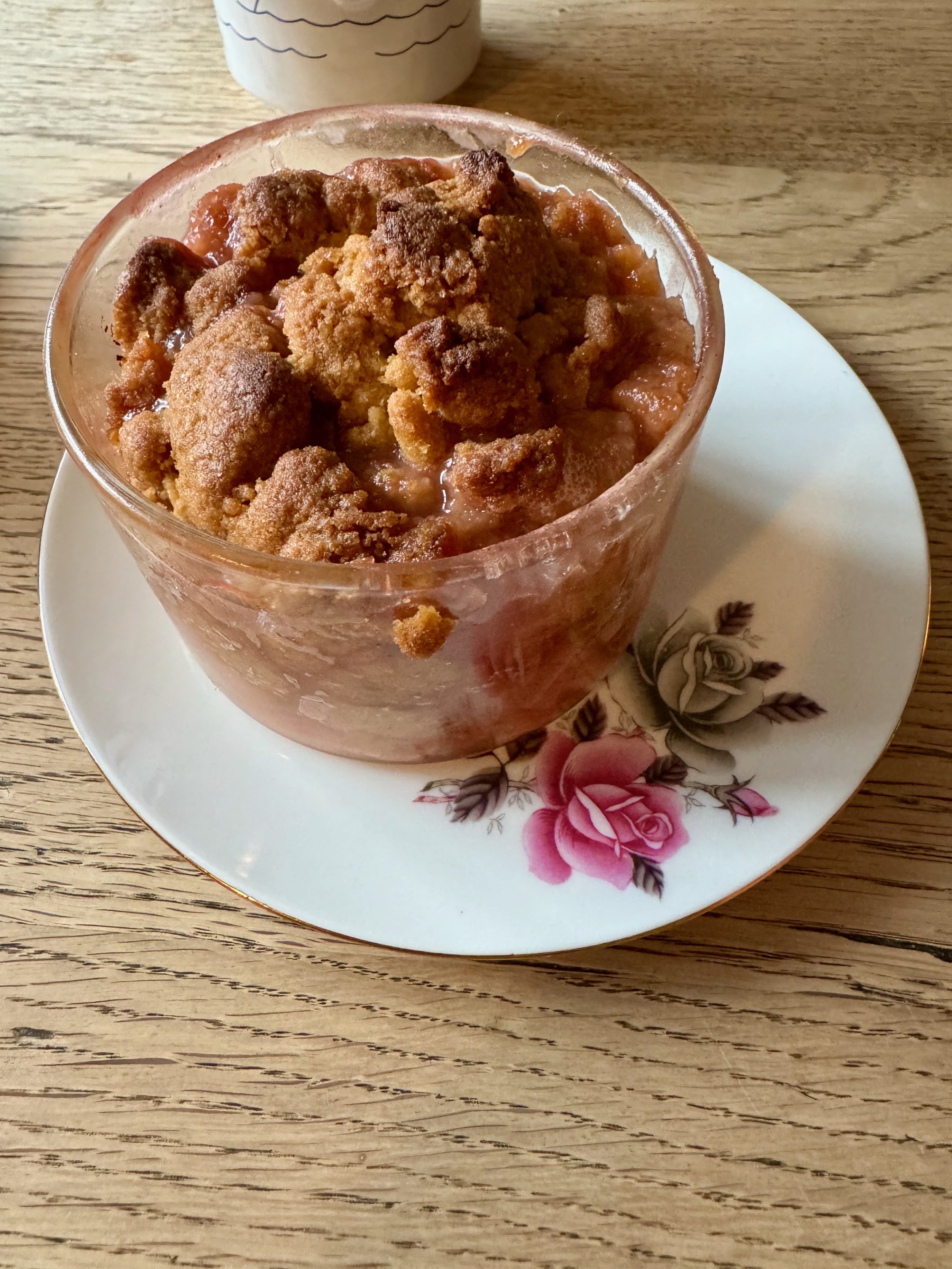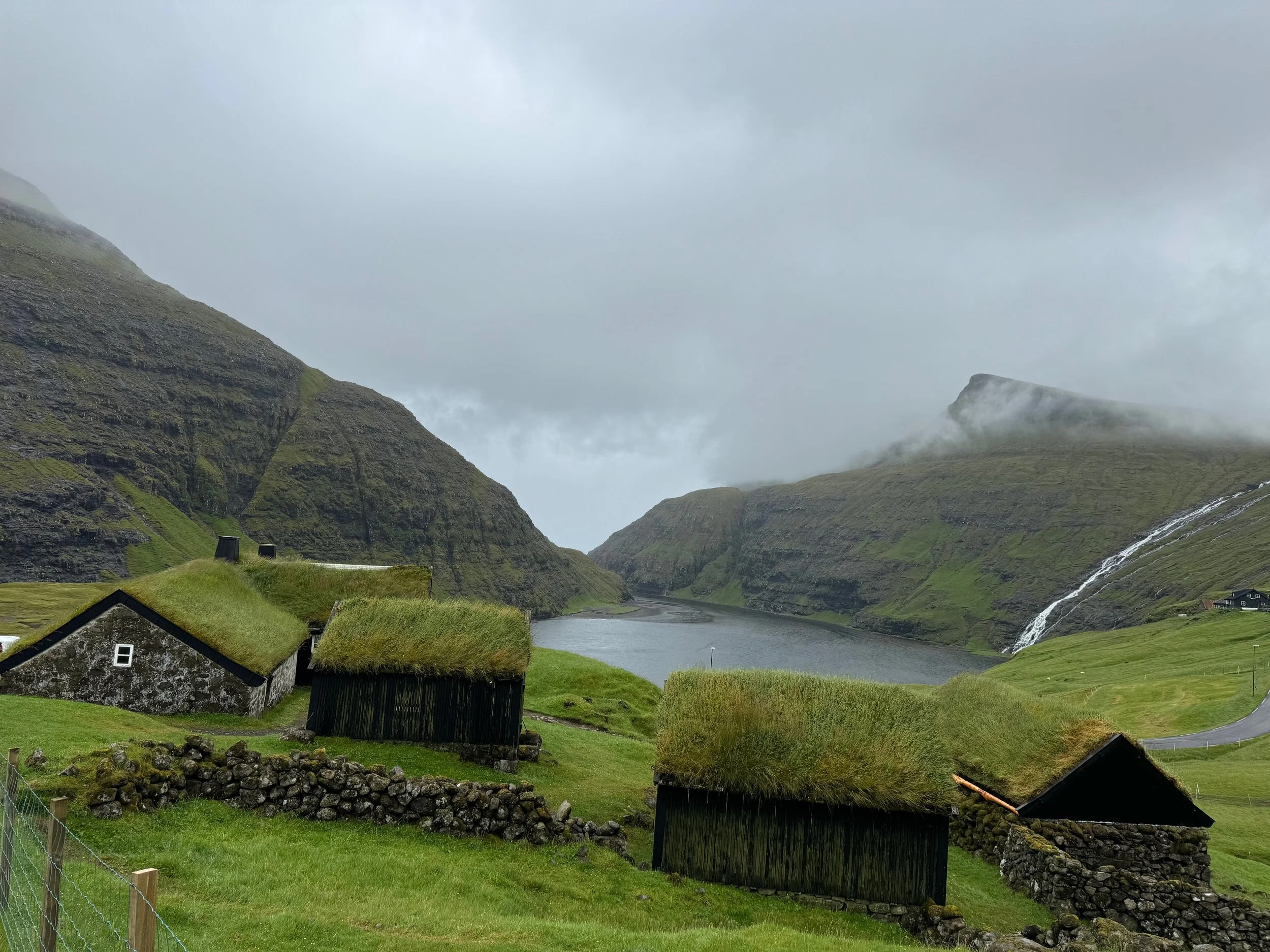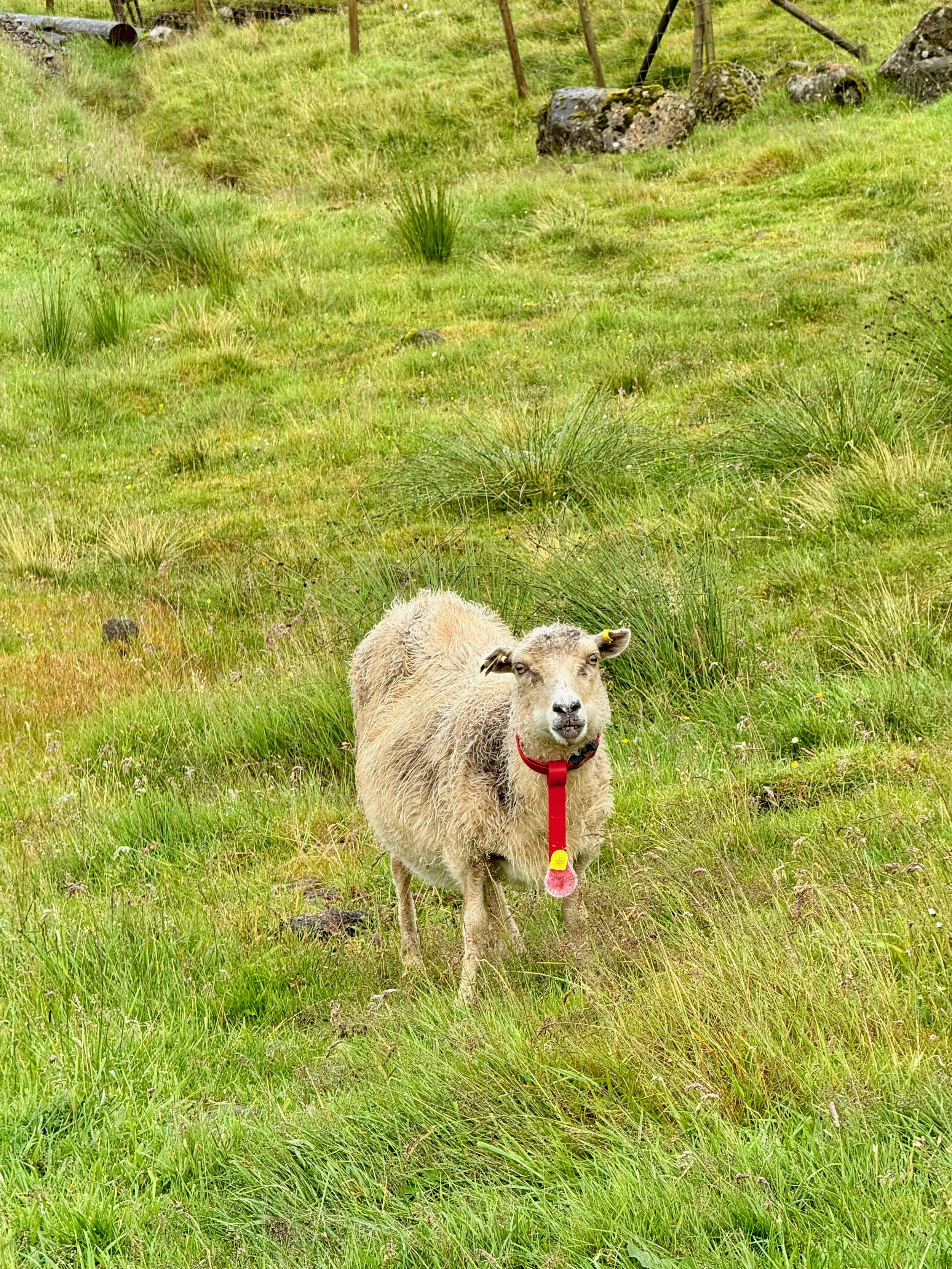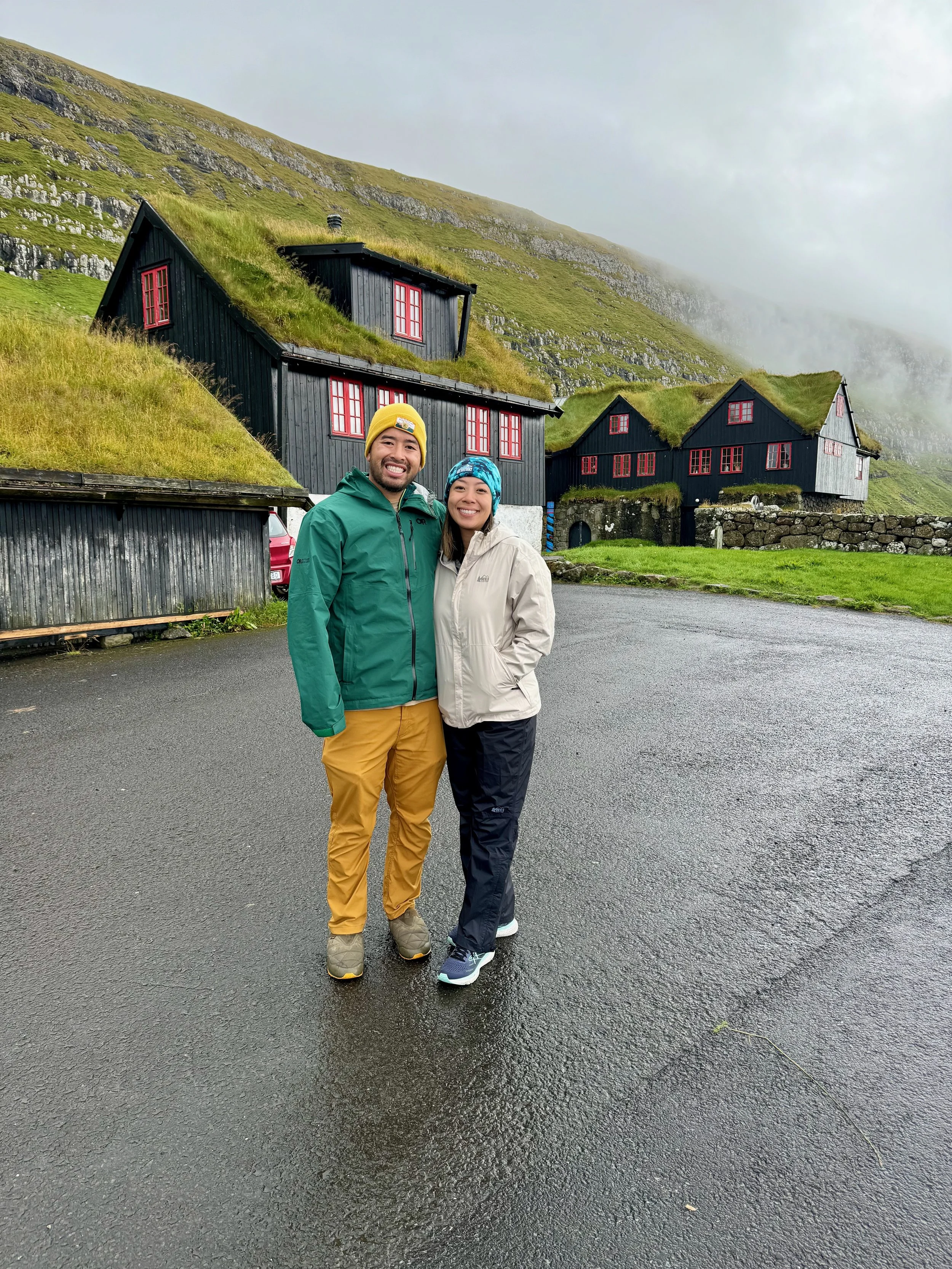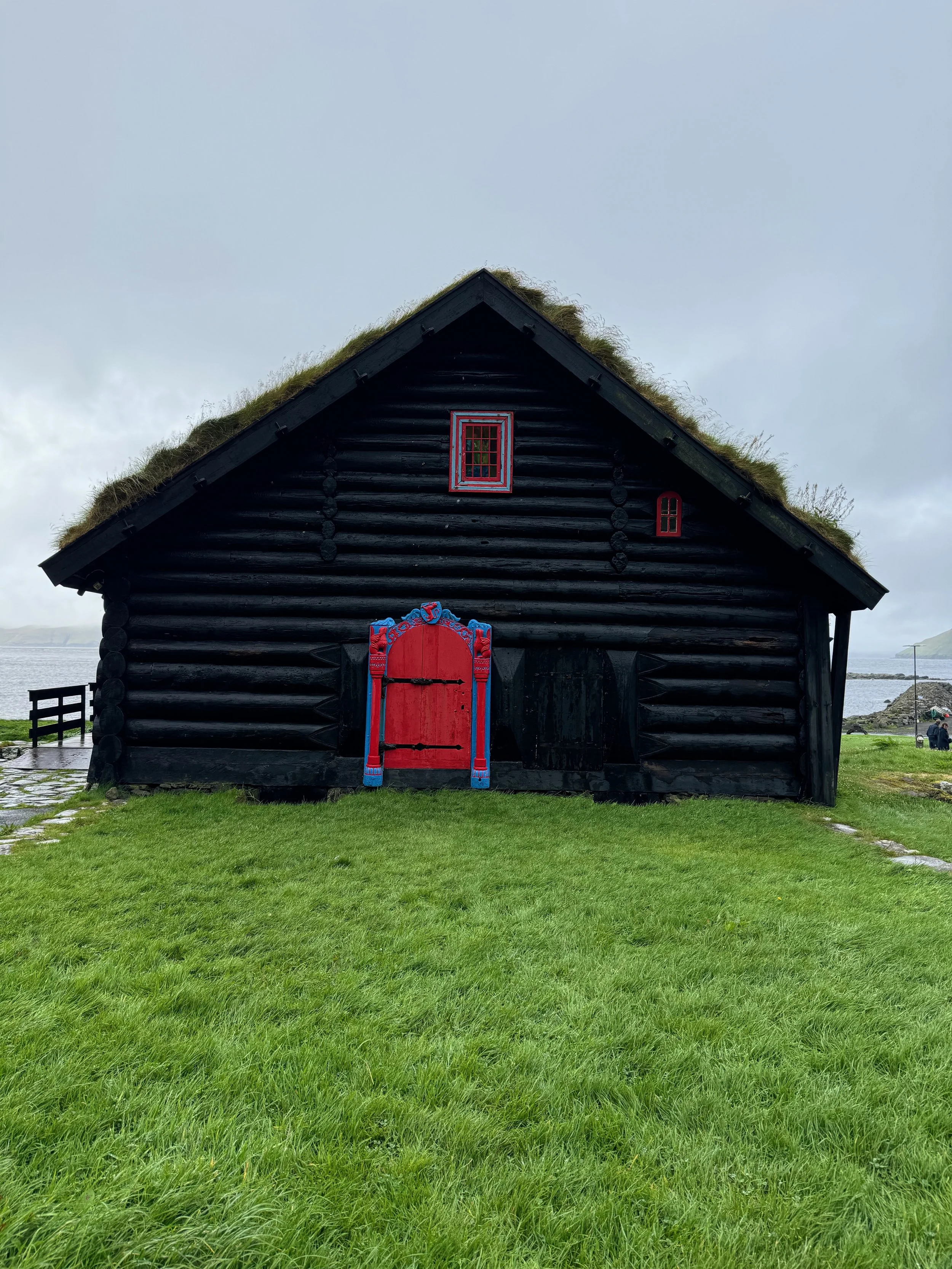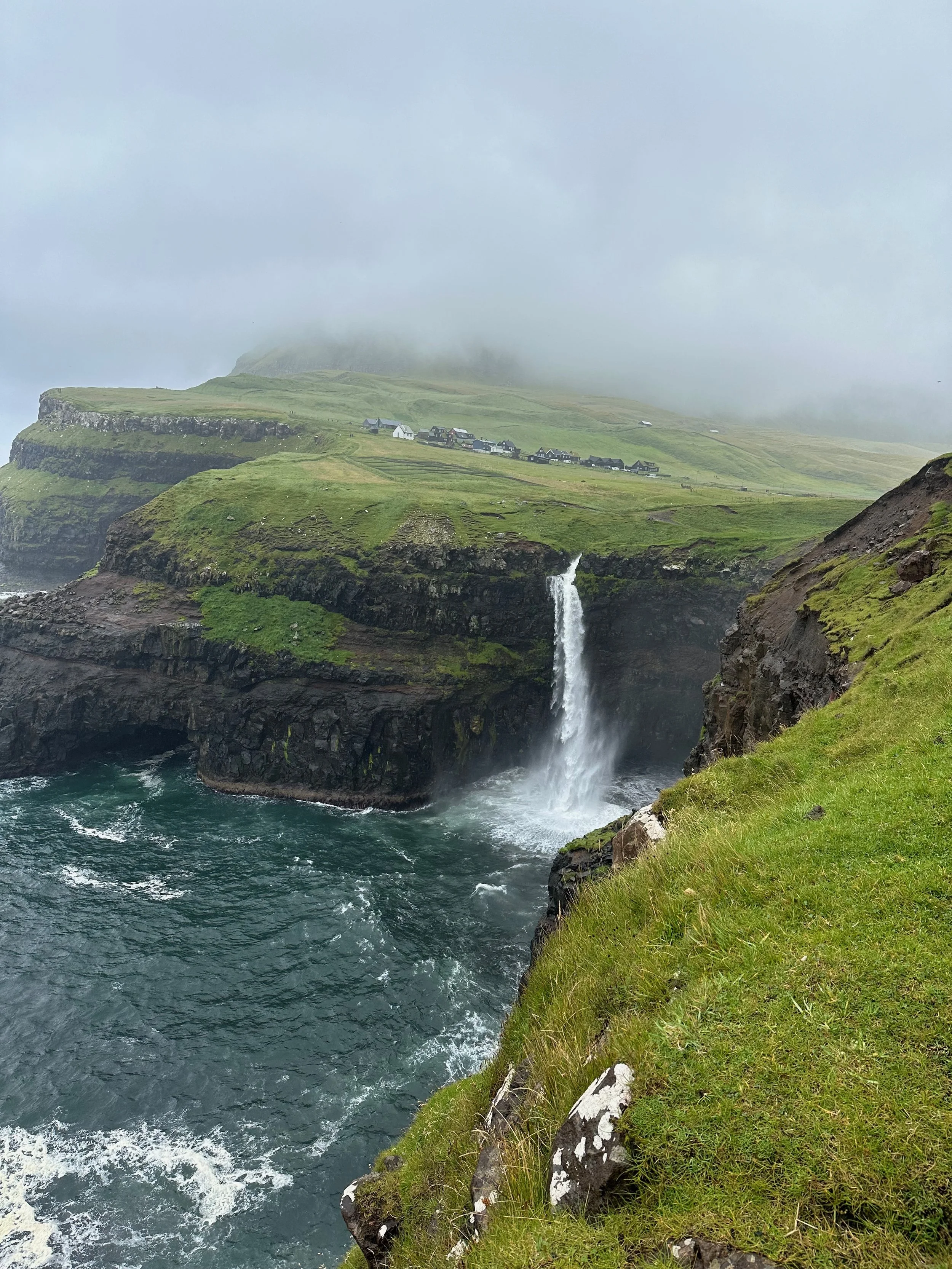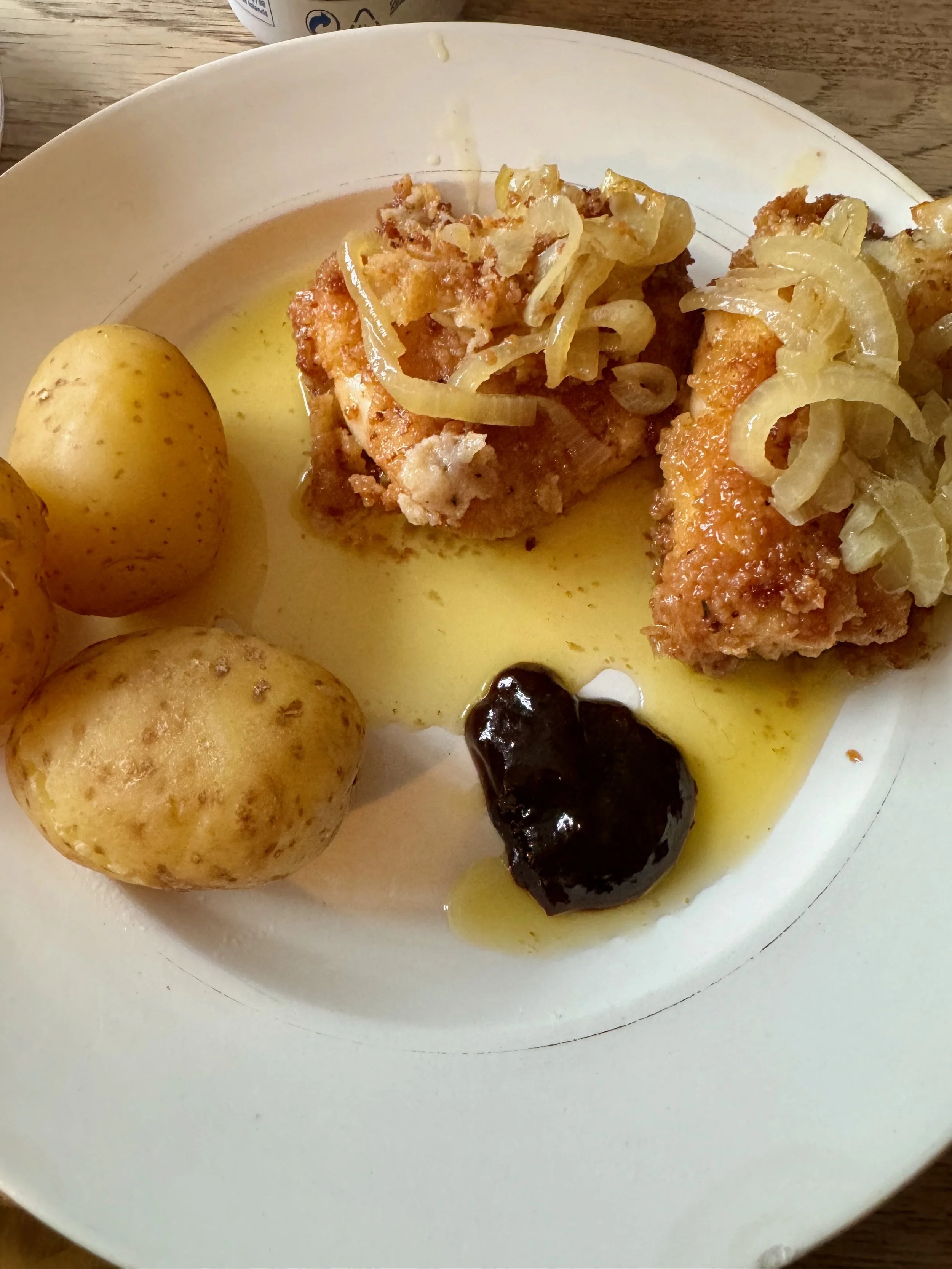Faroe Islands - Day 1
Saksun
The Faroe Islands is a small autonomous terrify of Denmark that speaks its own language and overall is pretty independent. They have partial control over their foreign affairs, have their own trade policies and agreements with other states, and are actually not apart of the European Union. With a population of around 54,000 there are actually more sheep on the Faroe Islands than there are people at 70,000!
I honestly didn’t know anything about the Faroe Islands until I started researching about how to get the truck to Iceland. When I discovered the ferry from Denmark, I noticed it would make a stop in Tórshavn, the capital, and had to Google it. Once I found out about it, I knew I had to find a way to stop by, and luckily the ferry route I chose had a perfect 3 day stop on the way to Iceland.
Our first introduction to the Faroes was not the best night of the trip for sure. As soon as we drove the truck off the boat, we were greeted with an absolute downpour with huge winds of 30-40mph making the rain fly sideways. One funny thing was while driving through customs, as soon as the customs officer saw my California plates, she had to stop me and ask where I was from and how long I was here for. She said she never seen these plates before and had to know. It was a pleasant introduction to the friendliness of the people on the island.
One of the many sheep
Once passed customs, we headed to the campground right next to the ferry since it was 10 at night. I honestly should have done a pre-check in Denmark before doing the first camp set up in Faroes because boy it was hectic. First, I had to unlock the tent portion (only locked for transport to Europe) because unlocking in a. Downpour was not pleasant. Then, I realized that my Redarc system was on, but I couldn’t turn on any lights. Trying to troubleshoot took a little bit, and after 5-7 minutes I couldn’t figure it out. With Dana waiting in the car to go to bed, I just finished setting everything else up and would work on it later. After that, the light in the truck wouldn’t turn off. While sitting there trying to figure it out for a bit, Dana finally told me she pressed a button in the back, and that solved the problem. Now, after everything else is settled, I went back in the camper to troubleshoot to discover that I forgot I unplugged the Rogue during transport. That solved my light problem immediately.
With the rain coming sideways, the passenger side of the tent was getting hammered by water. This is when I realized my first preparation mistake: I should have reapplied waterproofing and seam sealer to the tent material on the camper. My camper at this point was just under 2 years old, and with the heat of the camper baking the fabric every day, I typically find waterproofing of Roof Top Tents (RTT) should be applied once a year just to refresh it. Since I forgot to do this before the trip, the seam of the zipper on the side was getting wet and making the side of the Exped mattress get wet. Fortunately, this only affects the side and bottom of the mattress, but just another what is going on moment at camp. The last problem was the heater. The long journey being disconnected from the battery made it pop an error I was not prepared for. Fortunately, that was a quick troubleshoot and got it running to keep Dana warm. I was finally able to go to bed.
Kirkjubøur
Waking up early in the morning, the storm had settled down to a light drizzle. Like usual, I’m up a couple hours before Dana, so I just go about exploring the campground, eat breakfast, get some work done, and get ready for the day. Once Dana was up and ready to go, we began our journey in the Faroes. The first stop was to go grocery shopping. We stopped by a Bonus store since it was the only one open at that time. After stocking up on what we thought was enough food for the 3 days, we then stopped by a bank to get a free parking clock to attach to the car. This was needed for when we eventually explored Tórshavn as they offered free parking, but you need this clock on the car or they would ticket you. In a way, it makes a nice souvenir to remember the Faroes.
Once done with logistics, we began to head to our first destination. Although rainy and foggy, the drive was our first introduction to how beautiful the scene was around the island. There is so much greenery and the landscape is just amazing. Also, we began to see how many sheep there were around the island. They are everywhere and just free-grazing! You had to be really careful, as they sometimes do get on the road, and killing a sheep is a hefty fine since they do belong to the farmers. The roads can also be very narrow and sometimes one way, so you also had to pay attention to that aspect.
After a quick 20 minutes, we reached Kirkjubøur. Kirkjubøur is very important to Faroes history as it is the home of the Magnus Cathedral Ruins (built around 1300s), a church from the 12th century, and an old farmhouse from the 11th century that is still being used by farming families today. It has the classic Faroes style homes of black with red accents and a grass roofs. The grass roof has been used since the Viking age as a way of protection from rain, insulation, and saving other resources such as wood. Also in Kirkjubøur was a nice modern bathroom that was free. After exploring the sites for awhile, we got back in the car and started to head to our next destination, Saksun.
We took one of their scenic routes on the way to Saksun, the 50, and it was just unreal. We got blessed with the cloud cover clearing up for most of the drive so got treated with amazing views. We stopped at a lookout point and spent quite a bit of time there. Some sheep even got extremely close to us to take pictures! At one point, the road turned into a single lane road following a stream. Luckily, there are many pullouts that people can drive into to let oncoming cars by, and the system worked pretty well throughout the trip. If you visit, don’t park in those turnouts and block it!
When we finally reached Saksun, the weather turned on us in typical Faroes fashion with the wind and rain returning. There is not much over here other than more picturesque views of the sea and mountains. There is an old church that was reassembled to this location and a heritage farm called Dúvugarðar. You have to pay entrance to get to the waterfall and walk through the farm, but you can take pictures from afar outside. After making lunch in the crazy storm, we headed back out the one lane road.
Múlafossur Waterfall
Since we had dinner plans, we made our way to Vágar Island by crossing through one of the many undersea bridges that connect some of the larger islands. Make sure you pay the toll online within 6 days of travel. Since we had some time to kill before our dinner, we decided to go see the Múlafossur Waterfall, one of the most famous waterfalls in the Faroe Islands. Located near Gásadalur, it is a quick easy hike, and at least when I looked around, there was no area to pay, which is a rarity for a hike in the Faroes. To get to Gásadalur, you have to go through a one way tunnel. This tunnel is the only connection for the town to the rest of the island easily. Once the quick hike to the falls was over, we headed to the hostel campground to check in and kill time until the dinner.
For dinner, I booked a unique experience in the Faroes called HEIMABLÍDNI, which roughly translates to home hospitality. According to our host, only the past 10-15 years have restaurants/cafe culture really started to gain traction in the Faroes. Prior to that, locals mainly ate at home or each other houses. That is why when you go to the small towns, there are usually not many options for food, except in the capital. The Faroe Islands started a website called EatLocal where you can search for a host and look at the meal they provide during your trip. Once you reserve, the host will confirm if he or she can do the meal for you. It is an amazing way to not only try local food, but to get to know the local culture/people as well.
Traditional Fish and Chip with Rhubarb Jam
I chose a meal with Sølvi, who is located in Miðvágur. It was a nice house in which his grandma lived and he eventually bought and made his own. It was just Dana, myself, and a nice Polish couple having the meal. It consisted of a local beer, fish and chips Faroes style, and a delicious Rhubarb desert. The fish is cooked and soaked in butter and had onions mixed in. Sølvi also made a delicious Rhubarb jam/sauce to go along with it. The chips were while steamed potatoes, and according to Sølvi, every meal in the Faroes usually has to have some form of potatoes. He even told a story where a family member asked where were the potatoes when they were doing a sushi night! The evening was filled with great conversations back and forth while also learning about the culture. This is one thing I think it’s a must do if you visit the islands.
After our meal, we finally headed back to our campsite to call it a night. We met so many different families who were camping and wanted to ask questions about how we got the truck to the Faroes. I am so used to disperse camping and not having a soul nearby, and this was a pleasant surprise. From a Danish couple giving me beers for letting them take an easier spot for their RV, to a German couple who were so excited to talk about there time in America on Route 66 with little English, it was a great way of meeting people and learning about new cultures. Eventually, everyone was tired and we finally called it a good first day.
